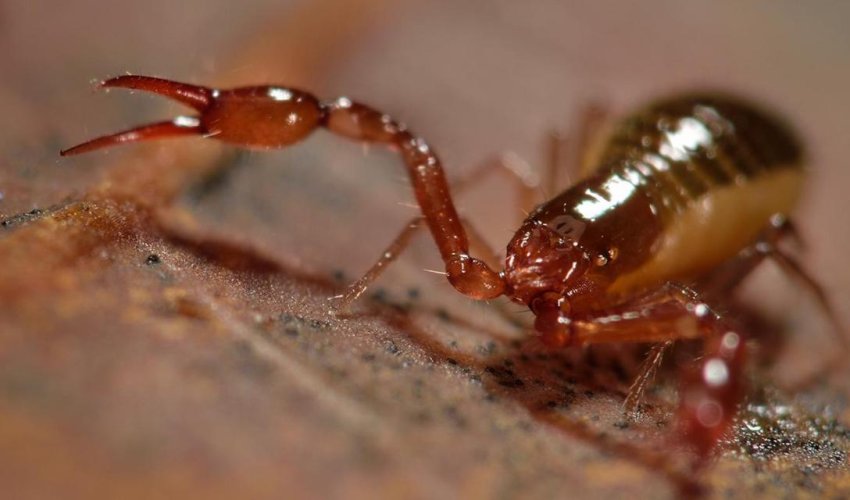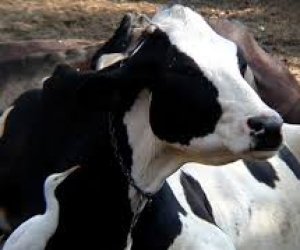This tiny creature can survive without breathing for 17 days

The northern pseudoscorpion lives in the frigid wastes of Canada's Yukon Territory, and the cold climate is just the beginning of its challenges
When it comes to ice age animals, mammoths get a lot of press. Sure, those hunks of curving ivory and cozy wool coats are pretty impressive. But where are they now? Collecting dust in museums across the globe.
Meanwhile, one of their ice age colleagues still thrives in the high Arctic, modestly hiding away under rocks alongside chilly rivers.
Give it up for the northern pseudoscorpion (Wyochernes asiaticus), a tiny arachnid with a big superpower: it can survive under water for weeks at a time, seemingly without breathing. While other arachnids are known to survive submersion for a few hours or days at a time, nothing even comes close to this.
There are over 3000 known pseudoscorpions, but very little is known about them.
Pseudoscorpions are arachnids, closely related to spiders and scorpions. They are typically 2-12mm long: the northern pseudoscorpion is on the smaller side, clocking in at 2-2.5mm.
Pseudoscorpions possess impossibly long pinchers relative to their bodies, seemingly without the counter-balance of a tail. They also do not have the scary stinger we are used to seeing on scorpions, hence the "pseudo".
Unlike spiders and scorpions, they do not bite or sting – at least not us. Instead, they prey upon other small invertebrates. For example, house pseudoscorpions like chowing down on book lice, clothes moths and the larvae of carpet beetles.
Christopher Buddle of McGill University in Canada is the first researcher to document the natural history of northern pseudoscorpions, in a paper published in 2015. His field team came upon them almost by accident.
Buddle and his colleagues were in Canada's Yukon Territory, working on another research project. As they rumbled along the Dempster Highway just south of the Arctic Circle, they passed a sign for Sheep Creek. The location triggered a memory for Buddle, who many years earlier had read a paper that mentioned finding northern pseudoscorpions on the creek's banks.
"So I slammed on the brakes," he says, and directed his team to the creek's rocky shores. "We searched under rocks, and it was there."
Knowing that only about four specimens were known to have been collected, Buddle promptly added this ice age relic to his research permit. For the next couple of years, he studied them in their native habitat.
Northern pseudoscorpions live in rocky zones beside creeks and rivers. The thing about these zones, says Buddle, is that besides being extremely cold, they regularly flood each spring when the snow melts, typically for two to seven days at a time.
He wanted to know how these tiny animals survive in this extreme environment.
Buddle, working with Brent Sinclair and Susan Anthony from the University of Western Ontario, collected 200 specimens and brought them back to their lab to study their tolerance for cold and immersion in water.
The team published their results in December 2015.
Anthony found that, like many arachnids and insects, northern pseudoscorpions avoid freezing by lowering their bodies' freezing point, a process called super-cooling. They can stave off freezing at temperatures as low as -7C, which is impressive but hardly world-beating: other cold-tolerant species like Antarctic springtails can super-cool to -20C.
Since the adult pseudoscorpions probably overwinter in temperatures much colder than -7C, the researchers say they probably use other techniques to survive, such as hiding away under insulating layers of snow.
However, the team got a big surprise when Anthony immersed the northern pseudoscorpions in water to see how long they could survive.After 17 days, half of the northern pseudoscorpions were still alive. "It's kind of tremendous," says Buddle. 17 days is much longer than the average flooding period in that part of the Yukon Territory.
When they were pulled out of the water, the pseudoscorpions appeared silvery in colour, suggesting they had trapped a layer of air around their bodies.
Many arthropods do this, says Buddle. But most arachnids use special structures called plastrons, which are a bit like the gills of a fish, to breathe the oxygen from this water.
The pseudoscorpions showed no signs of plastron respiration. In one test the team even removed all the oxygen from the water, and this did not affect the results.
It is not clear how the pseudoscorpions pulled this off, but it may be that they can somehow turn off many of their bodily functions.
"We think they are able to metabolically shut down underwater, and they can last that way a long time," says Buddle.
If that is true, we could learn a lot from them. Creatures that can survive extreme cold are being studied to help solve to human problems, like the need for longer storage times for organs used in transplants. An animal that can shut down its metabolism for weeks at a time could be equally helpful – for instance, for long-haul space travel.
"Every species has a story to tell," says Buddle.
(BBC)
www.ann.az
Latest news 
More news 



































 Photo
Photo 



 Video
Video 

